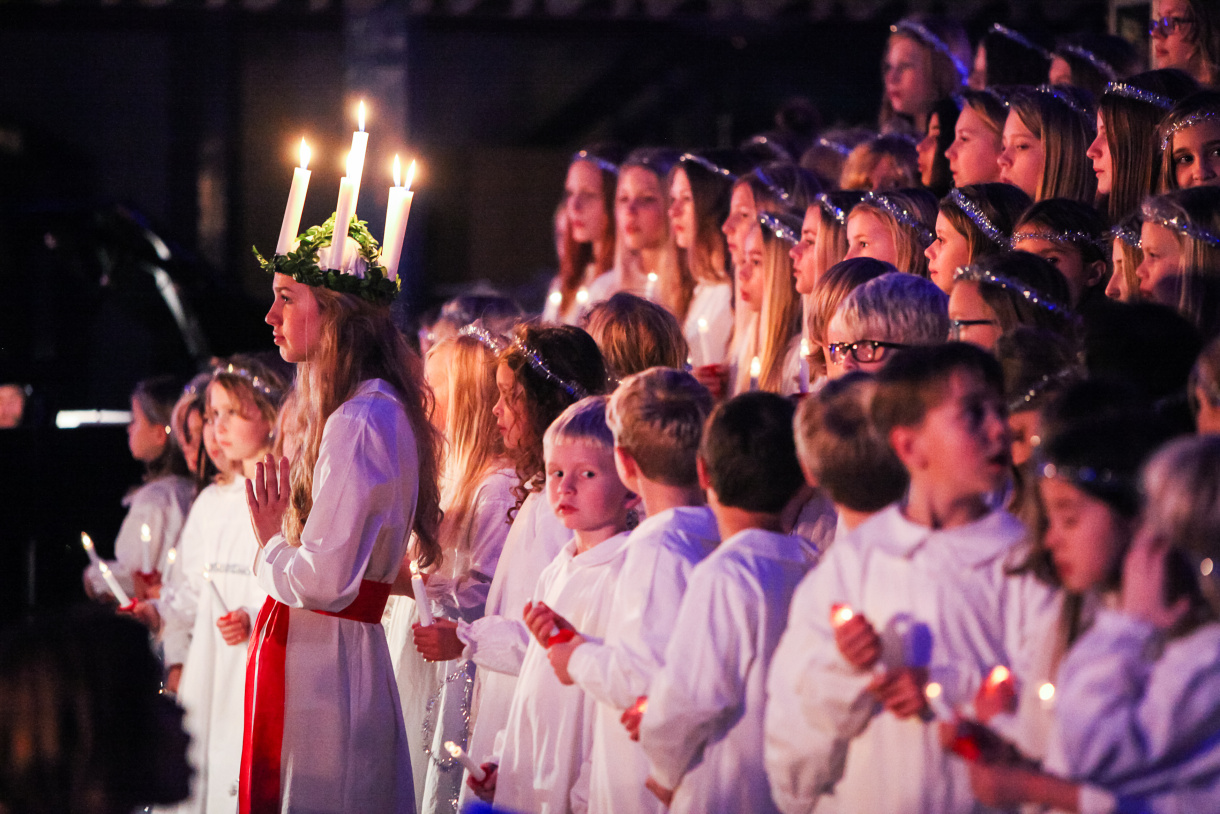Top Swedish traditions, from Nina Bressler
You may have heard about some Swedish traditions already. While some of these have a tendency of being distorted in the media - Midsommar by Ari Aster being the most extreme - the traditions do have some unusual quirks, influenced by superstition, religion as well as local and national seasonal changes. So, as a humble Swede, I’m here to guide you through some of the biggest traditions in the Swedish calendar.
Midsommar (Midsummer): the most recent one and probably – well, unofficially - one of the most important for all Swedes. Midsommar is the holiday when the cities empty and everyone migrates to a house in the countryside or to a neat cottage in the Swedish archipelago to enjoy the Swedish endless daylight at its very peak. We eat boiled new potatoes, herring and an occasional meatball followed by strawberries in all forms - strawberries are simply the sacred berry during this holiday. Nubbe (schnapps) is washed down with a loud and raunchy snapsvisa - a short snippet of a song that everyone knows well, even after a considerable amount of alcohol. We build a Midsummer pole, put flower wreaths on our heads, dance around the pole and play various team games. And just to make it very clear to anyone who watched the movie Midsommar – there are no human sacrifices!
Kräftskiva (Crayfish party): the next event in the calendar is set for when the crayfish season takes hold in August. We gather yet again, but on a smaller scale, to eat and to drink, enjoying the last summer evenings when the sun slowly starts receding back to winter again. Once again, we drink nubbe with a mandatory snapsvisa, but the main event is the mountain of crayfish, which is illustrated on cone shaped hats and banners that surround the table. Historically, August was the month when the crayfish was ready for the table; the tradition stuck and turned into a perfect excuse for a late summer party.
Lucia: Celebrated on 13 December, it is a highlight for many Swedes when the dark season reaches its peak. Originated from a legend about the Italian Saint Lucia, the Swedes have transformed it into an evocative event where choirs all dressed in white, a luciatåg, sing songs about Christmas and other subjects related to winter. The female crowd - or tärnor - has one female acting the main character Lucia, with a red ribbon tied around her waist and a crown of candles in her hair. Not for the faint hearted, as you will need to stand perfectly still in the front of the choir with lit candles on your head for the duration of the event! The male crowd - stjärngossar - also wears white robes and tall cone shaped hats on their heads. Everyone holds lit candles to light up the dark season and spread joy and happiness.
Julafton (Christmas Eve): Yes, Christmas may seem conventional enough, and while we do all the regular Christmas things other countries do - Christmas presents, Christmas tree, obscene amounts of food - we add our small quirks to this too. On 24 December at 3pm, we all turn on the television to watch Donald Duck and all his Disney friends for an hour. This is as sacred as Santa Claus. Much like Midsummer, we dance around the Christmas tree while singing traditional folk tunes, and at dinner we drink nubbe and sing snapsvisa too, only with more winter-inspired songs instead.
Påsk (Easter): Just like most of you, we celebrate Easter with loads of eggs, chocolate and Easter bunnies but with one major addition. On Maundy Thursday all children dress up as witches and go to houses asking for sweets. It’s like a Swedish Halloween, only we don’t threaten tricks should we not get any sweets. The tradition stems from the belief that witches mounted their brooms and flew to the island Blåkulla to feast with the devil on Maundy Thursday. With Easter lunch we also drink, you guessed it, nubbe accompanied with snapsvisa.
Any excuse for a party, eh?

